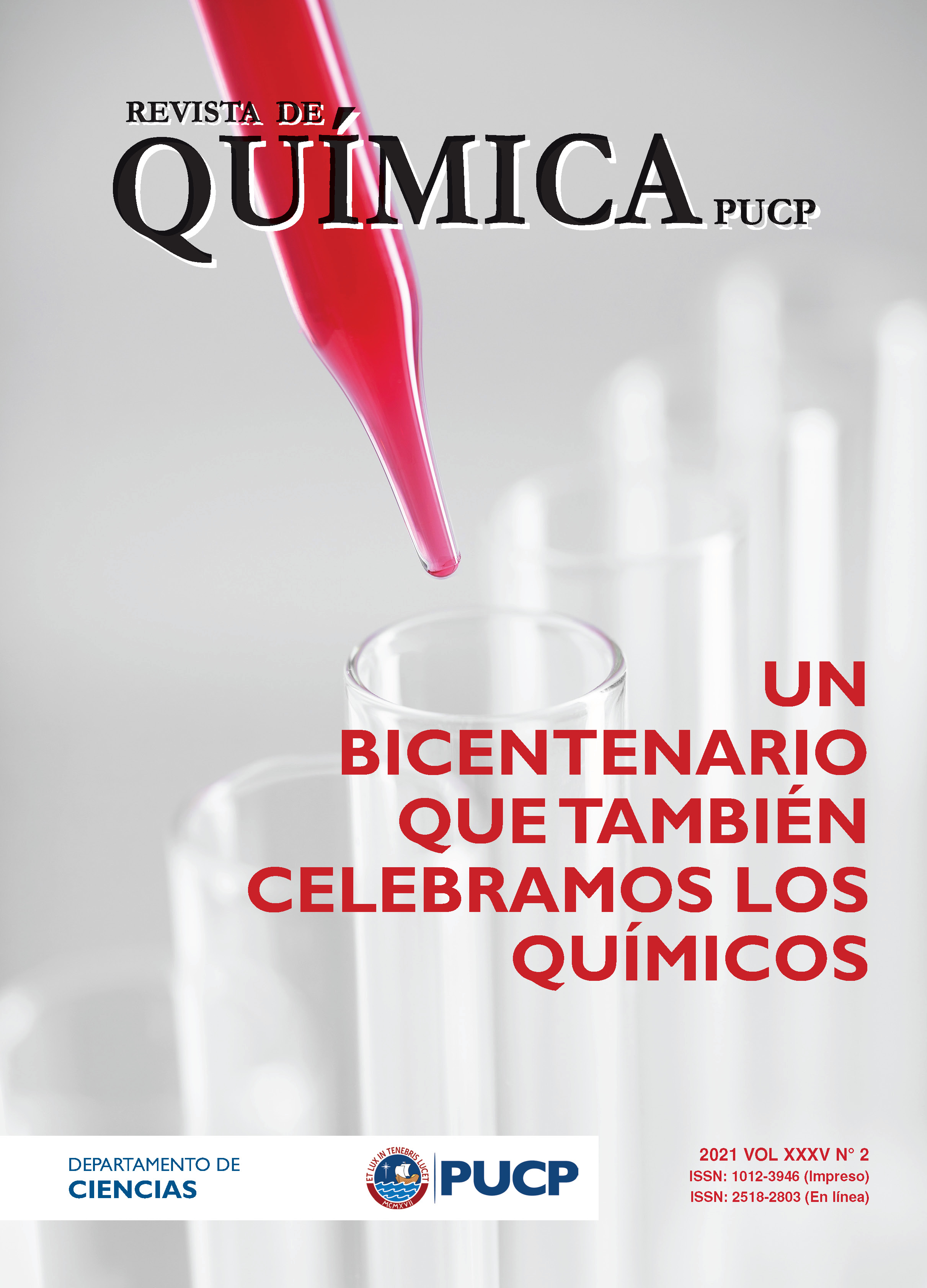100 años de la ciencia macromolecular: orígenes y perspectivas de futuro
Palabras clave:
ciencia macromolecular, polímeros, plásticos, ingeniería de materiales, materiales poliméricos avanzadosResumen
En el año 2020 se conmemoró el centenario de la aparición de la ciencia macromolecular o ciencia de los polímeros. La investigación pionera del químico alemán Herman Staudinger en 1920, el cual acuñó el término ‘polímero’, inició esta nueva área de la química. Durante décadas se han desarrollado una inmensa variedad de materiales poliméricos y plásticos con diversas aplicaciones en investigación académica, industria, transporte, salud, y tecnología electrónica. Actualmente, esta ciencia todavía enfrenta muchos retos tanto al nivel de ciencia fundamental como a su ingeniería y aplicaciones tecnológicas. En este artículo se resumen brevemente los hechos históricos trascendentales en el desarrollo de la ciencia macromolecular, y se discuten perspectivas de los retos actuales y del futuro.
Descargas
Citas
(1) The IUPAC Compendium of Chemical Terminology. https://goldbook.iupac.org/ (acceso 15 de Mayo, 2021).
(2) Staudinger, H. Über Polymerisation. Ber. dtsch. Chem. Ges. A/B 1920, 53, 1073-1085. https://doi.org/10.1002/cber.19200530627
(3) Frey, H.; Johann, T. Celebrating 100 years of “polymer science”: Hermann Staudinger's 1920 manifesto. Polym. Chem. 2020, 11, 8-14. https://doi.org/10.1039/C9PY90161B (acceso 15 de Mayo, 2021).
(4) Hermann Staudinger and the Foundation of Polymer Science. https://www.acs.org/content/acs/en/education/whatischemistry/landmarks/staudingerpolymerscience.html (acceso 15 de Mayo, 2021).
(5) Wallace Carothers and the Development of Nylon. https://www.acs.org/content/acs/en/education/whatischemistry/landmarks/carotherspolymers.html (acceso 15 de Mayo, 2021).
(6) Cowie, J. M. G.; Arrighi, V. Natural Rubber. In Polymers: Chemistry and Physics of Modern Materials, 3rd ed.; CRC Press: Boca Raton, FL, 2007; p. 390.
(7) U.S. Synthetic Rubber Program. https://www.acs.org/content/acs/en/education/whatischemistry/landmarks/syntheticrubber.html (acceso 15 de Mayo, 2021).
(8) Braun, D.; Cherdron, H.; Rehahn, M.; Ritter, H.; Voit, B. Polymerization with Ziegler-Natta Catalysts. In Polymer Synthesis: Theory and Practice, 4th ed.; Springer-Verlag: Berlin, 2005; p. 216.
(9) Flory, P. J. Principles of Polymer Chemistry, 1st ed.; Cornell University Press: Ithaca, NY, 1953.
(10) Braun, D. Origins and Development of Initiation of Free Radical Polymerization Processes. Int. J. Polym. Sci. 2009. https://doi.org/10.1155/2009/893234
(11) Ritchie, H.; Roser, M. Plastic Pollution. https://ourworldindata.org/plastic-pollution. (acceso 15 de Mayo, 2021).
(12) Geyer, R.; Jambeck, J. R.; Law, K. L. Production, use, and fate of all plastics ever made. Sci. Adv. 2017, 3, e1700782. https://doi.org/10.1126/sciadv.1700782
(13) Lim, X. Microplastics are everywhere — but are they harmful? Nature 2021, 593, 22-25. https://doi.org/10.1038/d41586-021-01143-3
(14) Tullo, A. H. Plastic has a problem; is chemical recycling the solution? https://cen.acs.org/environment/recycling/Plastic-problem-chemical-recycling-solution/97/i39 (acceso 15 de Mayo, 2021).
(15) 7 Things You Didn’t Know About Plastic (and Recycling). https://blog.nationalgeographic.org/2018/04/04/7-things-you-didnt-know-about-plastic-and-recycling/ (acceso 15 de Mayo, 2021).
(16) Yoshida, S.; Hiraga, K.; Takehana, T.; Taniguchi, I.; Yamaji, H.; Maeda, Y.; Toyohara, K.; Miyamoto, K.; Kimura, Y.; Oda, K. A bacterium that degrades and assimilates poly(ethylene terephthalate). Science 2016, 351, 1196–1199. http://doi.org/10.1126/science.aad6359
(17) Halford, B. A radical way to upcycle polymers. https://cen.acs.org/acs-news/acs-meeting-news/radical-way-upcycle-polymers/99/i13.
(18) Lee, S.; Kang, M.; Bae, J.; Sohn, J.; Sung, B. H. Bacterial Valorization of Lignin: Strains, Enzymes, Conversion Pathways, Biosensors, and Perspectives. Front. bioeng. biotechnol. 2019, 7, 1-18. https://doi.org/10.3389/fbioe.2019.00209
(19) Washam, C. Plastics Go Green. ChemMatters 2010, 4, 10-12. https://www.acs.org/content/dam/acsorg/education/resources/highschool/chemmatters/videos/chemmatters-april2010-bioplastics.pdf
(20) Grubbs, R. B.; Grubbs, R. H. 50th Anniversary Perspective: Living Polymerization Emphasizing the Molecule in Macromolecules. Macromolecules 2017, 50, 6979−6997. https://doi.org/10.1021/acs.macromol.7b01440
(21) Moad, G.; Rizzardo, E.; Thang, S. H. Radical addition–fragmentation chemistry in polymer synthesis. Polymer 2008, 49, 1079-1131. https://doi.org/10.1016/j.polymer.2007.11.020
(22) Matyjaszewski, K., Tsarevsky, N. Nanostructured functional materials prepared by atom transfer radical polymerization. Nat. Chem. 2009, 1, 276–288. https://doi.org/10.1038/nchem.257
(23) Wei, M.; Gao, Y.; Li, X.; Serpe, M. J. Stimuli-responsive polymers and their applications. Polym. Chem. 2017, 8, 127-143. https://doi.org/10.1039/C6PY01585A
(24) Bertrand, O.; Gohy, J. F. Photo-responsive polymers: synthesis and applications. Polym. Chem. 2017, 8, 52-73. https://doi.org/10.1039/C6PY01082B
(25) White, S., Sottos, N., Geubelle, P. et al. Autonomic healing of polymer composites. Nature 2001, 409, 794–797. https://doi.org/10.1038/35057232
(26) White, S. R.; Blaiszik, B. J.; Kramer S. L. B.; Olugebefola, S. C.; Moore, J. S., Sottos, N. R. Self-healing Polymers and Composites: Capsules, circulatory systems and chemistry allow materials to fix themselves. American Scientist 2011, 99, 392-399. https://www.jstor.org/stable/23019350
(27) Ying, H., Zhang, Y. & Cheng, J. Dynamic urea bond for the design of reversible and self-healing polymers. Nat. Commun. 2014, 5, 3218. https://doi.org/10.1038/ncomms4218
(28) De Bo, G. Polymer Mechanochemistry and the Emergence of the Mechanophore Concept. Macromolecules 2020, 53, 7615–7617. https://doi.org/10.1021/acs.macromol.0c01683
(29) Boydston, A. J.; Cui, J.; Lee, C.; Lynde, B. E.; Schilling, C. A. 100th Anniversary of Macromolecular Science Viewpoint: Integrating Chemistry and Engineering to Enable Additive Manufacturing with High-Performance Polymers. ACS Macro Lett. 2020, 9, 1119–1129. https://doi.org/10.1021/acsmacrolett.0c00390.
(30) Tumbleston, J. R.; Shirvanyants, D.; Ermoshkin, N.; Janusziewicz, R.; Johnson, A. R.; Kelly, D.; Chen, K.; Pinschmidt, R.; Rolland, J. P.; Ermoshkin, A.; Samulski, E. T.; DeSimone, J. M. Continuous liquid interface production of 3D objects. Science 2015, 347, 1349–1352. https://doi.org/10.1126/science.aaa2397
Descargas
Publicado
Cómo citar
Número
Sección
Licencia
Derechos de autor 2021 Jorge Ayarza

Esta obra está bajo una licencia internacional Creative Commons Atribución 4.0.













